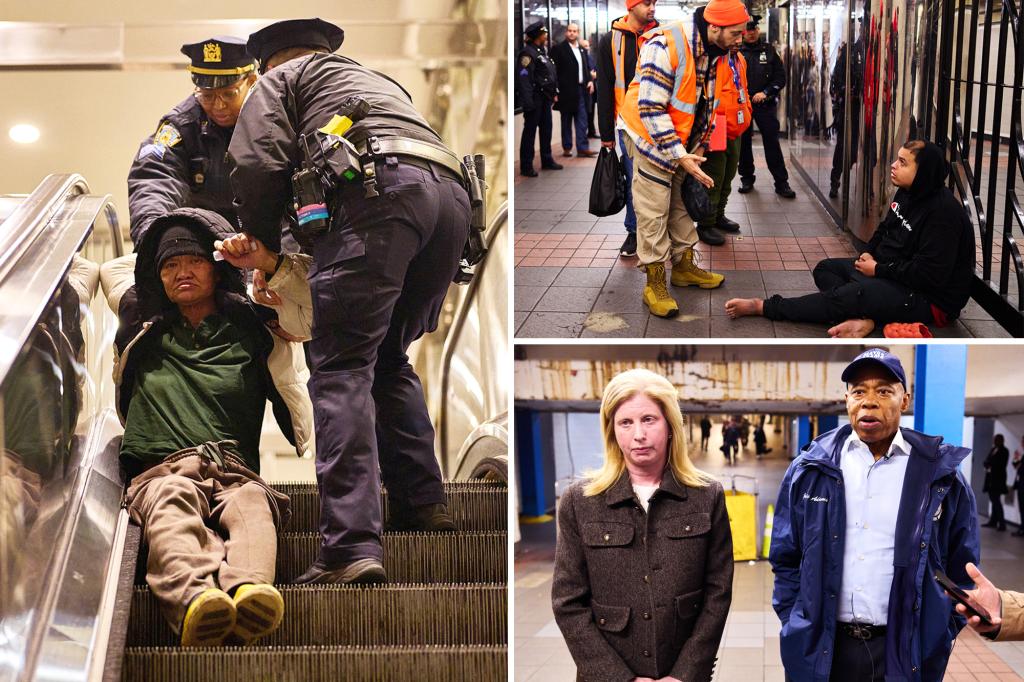Mayor Eric Adams embarked on an overnight tour of the New York City subway system to gain firsthand insight into the city’s escalating homelessness crisis. Accompanied by Police Commissioner Jessica Tisch and a team from the city’s multi-agency outreach program, PATH (Partnership Assistance for Transit Homelessness), the mayor witnessed the stark reality of the situation, encountering nearly 100 individuals grappling with homelessness and mental health challenges within the desolate environment of the subway. The tour, which included a stop at the notorious Penn Station, a known haven for the city’s homeless population, underscored the urgent need for effective interventions. While the outreach teams offered assistance, the overwhelming majority declined, highlighting the complexity of the issue and the difficulties faced by those trying to address it. The mayor emphasized the necessity of a collaborative approach, calling upon state lawmakers to provide the necessary tools and resources to effectively tackle this growing problem.
The mayor’s late-night excursion served as a stark reminder of the human cost of the city’s homelessness epidemic. Many of the individuals encountered were visibly struggling with mental health issues, underscoring the need for comprehensive solutions that address both the immediate needs of the homeless population and the underlying causes of their plight. The low acceptance rate of offered services illuminated the deep-seated mistrust and complex challenges faced by individuals experiencing homelessness, often compounded by mental illness and addiction. This resistance to assistance emphasizes the need for more nuanced and empathetic outreach strategies that build trust and address the root causes of individuals’ reluctance to engage with support services.
Mayor Adams stressed the urgency of the situation, advocating for legislative action to empower the city to more effectively address the crisis. He specifically referenced the Supportive Interventions Act, which would grant authorities the power to involuntarily remove individuals deemed in need of medical or psychiatric care from the streets. The mayor argued that this legislation is crucial to ensure the safety and well-being of both the homeless population and the wider community. He highlighted the limitations of current approaches, arguing that without adequate legal frameworks and resources, the city’s efforts to address the homelessness crisis will remain insufficient.
The mayor’s tour followed the recent acquittal of Daniel Penny, a former Marine charged in the death of Jordan Neely, a homeless man experiencing a mental health episode on the subway. This high-profile case has further fueled the debate surrounding the city’s handling of homelessness and mental illness, intensifying calls for more effective interventions and compassionate solutions. The incident underscores the potential for tragic consequences when vulnerable individuals lack access to adequate support and care, and highlights the need for systemic change to prevent similar tragedies in the future. It also exposed the raw nerves surrounding public safety and the challenges of addressing mental health crises in public spaces.
The mayor pointed to the closure of psychiatric wards years ago as a contributing factor to the current crisis, emphasizing the need for increased investment in mental health services and supportive housing. He acknowledged the city’s existing outreach efforts but argued that without addressing the underlying systemic issues, the situation will only continue to deteriorate, potentially leading to increased violence and further exacerbating the challenges faced by both the homeless population and the city as a whole. The mayor’s comments underscore the interconnectedness of homelessness, mental health, and public safety, and highlight the need for a multifaceted approach that addresses all aspects of this complex issue.
While the mayor and police officials noted a decrease in overall crime within the transit system and the city, they acknowledged that public perception remains largely unchanged. Commissioner Tisch emphasized the importance of addressing the “perception of disorder” which contributes to public unease. She highlighted the city’s efforts to address quality-of-life issues and improve the overall sense of safety in the subway system and throughout the city. She described the PATH initiative as a prime example of a collaborative approach that combines law enforcement with clinical support to provide care for those in need. The commissioner’s comments underscore the city’s commitment to both addressing crime and improving the overall quality of life for all New Yorkers.










